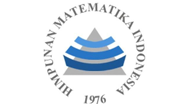How the Pigeonhole Principle Can be Applied to Verify the Number of Classrooms Needed
Abstract
Keywords
Full Text:
PDFReferences
D. I. Suranto, S. Annur, Ibrahim, and A. Alfiyanto, “Pentingnya Manajeman Sarana dan Prasarana Dalam Meningkatkan Mutu Pendidikan,” Kiprah Pendidik., vol. 2, no. 1, pp. 59–66, 2022, doi: https://doi.org/10.33578/kpd.v1i2.26.
V. Balaji et al., “The pigeonhole principle and multicolor Ramsey numbers,” Involve, vol. 15, no. 5, pp. 857–884, 2022, doi: 10.2140/involve.2022.15.857.
J. Morris, Combinatorics, no. March. Lethbridge: University of Lethbridge, 2023.
K. H. Rosen, Discrete Mathematics and Its Aplications, 7th ed. New York: New York: McGraw-Hill, 2012.
W. Jiang, “Research on Existential Problems Based on Drawer Principle,” in International Conference on Mathematics, Big Data Analysis and Simulation and Modeling (MBDASM 2019), Atlantis Press, 2019, pp. 4–7. doi: 10.2991/mbdasm-19.2019.2.
R. B. J. T. Allenby and A. Slomson, How to count: An introduction to combinatorics, second edition. CRC Press, 2011. doi: 10.1201/9781439895153.
K. R. Rebman, “The Pigeonhole Principle (What It Is, How It Works, and How It Applies to Map Coloring),” Two-Year Coll. Math. J., vol. 10, no. 1, 1979, doi: 10.2307/3026807.
K. Bankov, “Applications of the pigeon-hole principle,” Math. Gaz., vol. 79, no. 485, pp. 286–292, 1995.
T. I. Pramudhita, “Penerapan Prinsip Sarang Burung Merpati (Pigeonhole Principle) Dalam Pengaturan Latihan Atlet dan Kombinasi Game Dalam Suatu Turnamen,” Jakarta, MAT TYA p 2020-2021, 2021. [Online]. Available: http://journal.unilak.ac.id/index.php/JIEB/article/view/3845%0Ahttp://dspace.uc.ac.id/handle/123456789/1288
M. Khoshakhlagh and N. Masoumi, “A Pigeonhole Principle-Based Method for Estimating the Resonant Frequency of SAWR Sensors,” IEEE Trans. Instrum. Meas., vol. 68, no. 11, pp. 4502–4509, 2019, doi: 10.1109/TIM.2018.2889234.
C. I. Chang, “Introduction: Two fundamental principles behind hyperspectral imaging,” in Advances in Hyperspectral Image Processing Techniques, John Wiley & Sons, Inc., 2022. doi: 10.1002/9781119687788.ch1.
C. Chuan-Chong and K. Khee-Meng, “Principles and Techniques in Combinatorics.” World Scientific, Singapore, 2010.
R. Munir, Matematika Diskrit, Rev ke 5. Bandung: Bandung: Informatika Bandung, 2016.
R. L. Graham, D. E. Knuth, and O. Patashnik, Concrete Mathematics: A Foundation for Computer Science. United States of America: Addision-Wesley, 1994. doi: 10.2307/2324448.
D. Grieser, Exploring Mathematics: Problem-Solving and Proof. Springer, 2018.
DOI: http://dx.doi.org/10.30829/zero.v8i1.19292
Refbacks
- There are currently no refbacks.

This work is licensed under a Creative Commons Attribution-ShareAlike 4.0 International License.
Publisher : Department of Mathematics Faculty of Science and Technology Universitas Islam Negeri Sumatera Utara Medan | |
✉️ Email: zero_journal@uinsu.ac.id 📱 WhatsApp:085270009767 (Admin Official) | |
 |  |  |  |  |



